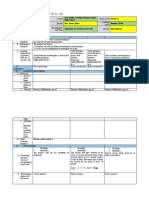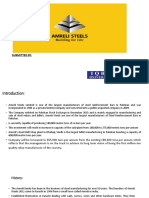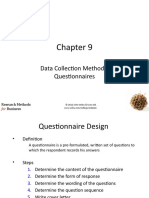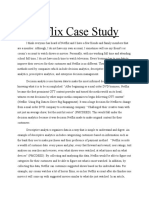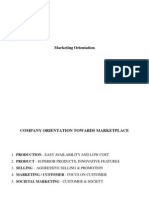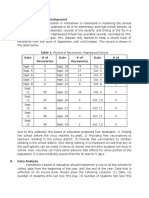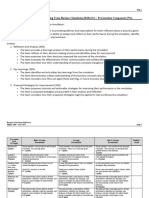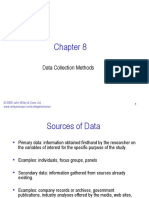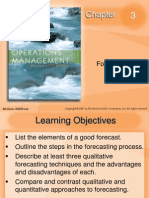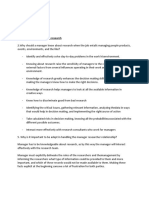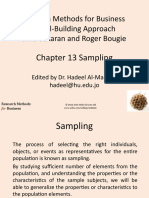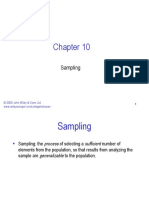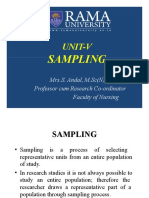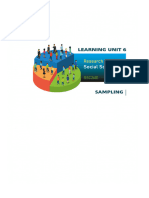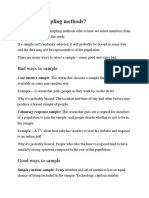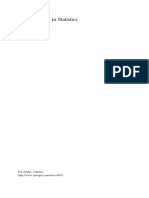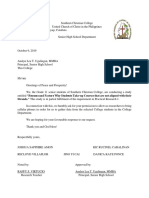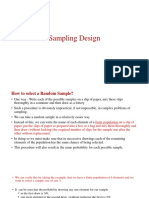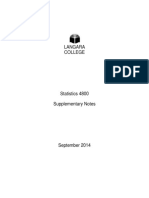0% found this document useful (0 votes)
154 views20 pagesCh13 Sampling
The document discusses different sampling techniques used in research including probability sampling methods like simple random sampling, systematic sampling, stratified random sampling and cluster sampling as well as non-probability sampling methods. It provides details on key aspects of each sampling technique and how sample size affects precision and confidence.
Uploaded by
Md Hamid Ullah Bhuian 1310851630Copyright
© © All Rights Reserved
We take content rights seriously. If you suspect this is your content, claim it here.
Available Formats
Download as PDF, TXT or read online on Scribd
0% found this document useful (0 votes)
154 views20 pagesCh13 Sampling
The document discusses different sampling techniques used in research including probability sampling methods like simple random sampling, systematic sampling, stratified random sampling and cluster sampling as well as non-probability sampling methods. It provides details on key aspects of each sampling technique and how sample size affects precision and confidence.
Uploaded by
Md Hamid Ullah Bhuian 1310851630Copyright
© © All Rights Reserved
We take content rights seriously. If you suspect this is your content, claim it here.
Available Formats
Download as PDF, TXT or read online on Scribd
/ 20












